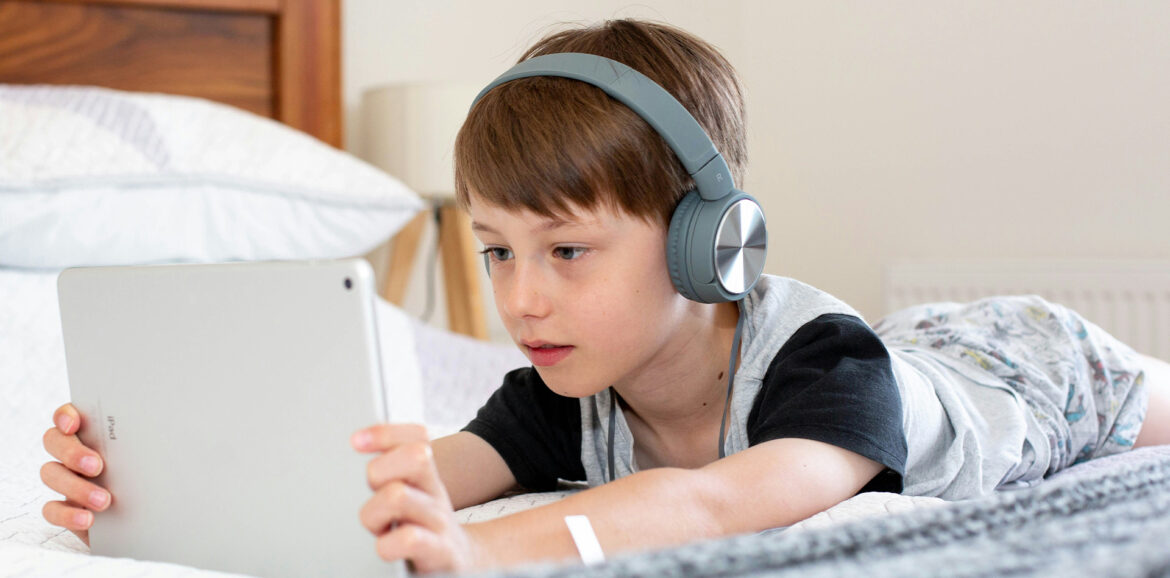As a parent, you want nothing more than to protect your child. From falls, colds and…. loud noises. Because although hearing damage is often associated with concerts or factory noise, it is the young ears that are especially vulnerable. And sounds that are still perfectly tolerable for us can already be harmful for a child.
In this blog, we explain why children’s hearing is more sensitive, what situations pose risks and – most importantly – how to properly protect young ears.
Why is children’s hearing so vulnerable?
Children are born with a complete but not yet fully developed hearing system. The eardrum and ossicles are finer and more sensitive than those of adults. This means that loud sounds can damage children more quickly. In addition, children are often less aware of sound levels. They just keep playing next to a speaker, while you are already automatically covering your ears.
Hearing damage at a young age is usually permanent. Once damaged, cilia in the inner ear do not recover. And that can later cause concentration problems, learning disabilities and social awkwardness.
Loud noises: what to look out for?
You may not immediately think of hearing protection at a party or day out. Yet there are many situations in which the noise level rises too high unnoticed. Consider:
- Children’s events with music or fireworks
- Fairgrounds and amusement parks
- Sports games in a stadium
- Birthday parties with loud music or shouting
- Music festivals that children attend
- St. Nicholas parades or parades with sirens
- Fireworks during New Year’s Eve
- Construction or renovation work at home
- Use of speakers or headphones
Did you know that noise above 85 decibels can already cause hearing damage with prolonged exposure? And that a fireworks bang can go up to 150 decibels – equivalent to a fighter jet at close range?
How do you know if the sound is too loud?
A handy guideline: if you have to shout to understand each other from a meter away, it’s too loud. And if you as an adult perceive it as noise, you can assume it is even more harmful to a child.
Also watch for signs in your child, such as:
- Complaining of a squeak or noise in the ear
- Holding the hands in front of the ears
- Overexcited or tired behavior after a noisy situation
- Problems with speech or understanding
Hearing protection for kids: these are your options
Fortunately, there are good and child-friendly solutions to protect young ears. The most common forms of hearing protection for children are:
1. Earmuffs
Ear muffs are ideal for festivals, sporting events, fireworks shows or renovations. They seal well, are comfortable and specially designed for children’s ear muffs. There are even models available for babies as young as 3 months. They muffle sound considerably, but still let you hear enough to make your child feel safe.
2. Custom-made earplugs
For older children are custom-made earplugs are an excellent option. These are fitted to your child’s ear and offer the best fit and noise reduction. Ideal for children who are regularly exposed to noise, for example at music lessons or in a busy classroom.
3. Universal children’s earplugs
A cheaper and practical alternative are universal children’s earplugs. They are reusable, are comfortable and are perfect for occasional use, such as during a birthday party with lots of music. When purchasing, pay attention to the attenuation level (SNR value) and whether they are suitable for children’s ears.
4. Hearing protection with playful designs
Children are more likely to wear hearing protection if it looks fun. Fortunately, ear muffs and plugs come in bright colors, with cool prints or even animals on them. Make choosing hearing protection together a fun time – then your child is more likely to actually wear it.
What can you do yourself?
In addition to hearing protection, there are a few simple things you can do as a parent:
- Provide distance: Keep your child away from speakers, generators or fireworks.
- Choose quiet moments: At a festival or event, for example, sit a little farther from the stage.
- Limit screen and listening time with sound: Pay attention to the volume on tablets, headphones and game consoles.
- Teach your child conscious listening: Explain why some sounds are harmful and how they can protect their ears.
- Ask questions: After a busy day, ask how your child feels. Was the sound too loud? Were the headphones comfortable?
And with water?
Ear problems can also be caused by water in the ears. Children with tubes, eczema or a sensitive eardrum are particularly at risk. In such cases custom-made swimming plugs or universal swim plugs are also a form of hearing protection, specifically against water. You can also have these made in bright colors and with fun decorations – just as comfortable as they are safe.
Summary
Children’s hearing is both precious and vulnerable. And although you can’t avoid all loud noises, you can do a lot to prevent damage. From earmuffs and child-friendly earplugs to awareness and smart behavior: every step counts.
Protect young ears – they should last a lifetime.
Want to know which hearing protection is right for your child? In our webshop you will find a wide range of ear muffs, children’s earplugs and swimming earplugs. We are also happy to help you with personal advice, please feel free to contact us.








